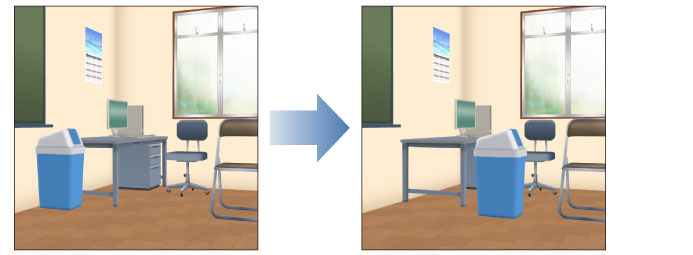

lip), rather than the multiple files used for each page by Manga Studio 4 and earlier. Sold in different markets as "Clip Studio Paint" version 1 or "Manga Studio" version 5, the new application featured new coloring and text-handling tools, and a new file system which stored the data for each page in a single file (extension. In 2013 a redesigned version of the program was introduced, one based on Celsys' separate Comic Studio and Illust Studio applications. Įarly versions of the program were designed for creating black and white art with only spot color (a typical format for Japanese manga), but version 4 – released in 2007 – introduced support for creating full-color art.
#CLIP STUDIO PAINT 3D MATERIALS SOFTWARE#
It was sold as "Manga Studio" in the Western market by E Frontier America until 2007, then by Smith Micro Software until 2017 after which it has been sold and supported by Celsys and Graphixly LLC. The original version of the program ran on macOS and Windows, and was released in Japan as "Comic Studio" in 2001. It is distinguished from similar programs by features designed for creating comics: tools for creating panel layouts, perspective rulers, sketching, inking, applying tones and textures, coloring, and creating word balloons and captions. It has drawing tools which emulate natural media such as pencils, ink pens, and brushes, as well as patterns and decorations. It is designed for use with a stylus and a graphics tablet or tablet computer. The full-featured edition is a page-based, layered drawing program, with support for bitmap and vector art, text, imported 3D models, and frame-by-frame animation. The application is sold in editions with varying feature sets. The software is available in versions for macOS, Windows, iOS, iPadOS, Android, and Chrome OS. It is used for the digital creation of comics, general illustration, and 2D animation. Once you have done all this, you will finish the course exporting your fantasy and science fiction illustration with Clip Studio Paint.English (United States), French, German, Japanese, Korean, Spanish, and Traditional ChineseĬlip Studio Paint (previously marketed as Manga Studio in North America), informally known in Japan as Kurisuta ( クリスタ), is a family of software applications developed by Japanese graphics software company Celsys. With the illustration almost completed, you will establish the light and shadow of the illustration, and you will paint the elements that have not been delineated, such as backgrounds, clouds and smoke, among others. You will learn to find harmony through the base color of the elements, so that the illustration transmits a mood on its own, and to define the color for each one of them within the scene. Next, you will add details to each of them and you will improve the perspective and depth of the scene. You will define the postures and attitude of your characters based on your story and the context in which they are. Heber will comment on the importance of having a good composition in the illustration, so that you place the characters among other elements perfectly. You will look for references and inspiration to define possible characters and narrative threads, and once you are clear about what you want to tell, you will have all the creative freedom to explore ideas and start making your illustration come true, creating the characters and the story. You will see the characteristics of the genres of science fiction and fantasy, to find the way to merge both genres. Then, you will see what has been a source of inspiration in his life and in his way of working.Īfterwards, you will learn about the Clip Studio Paint interface and the main tools it offers to work seamlessly with your illustration. The first thing you will do is meet Heber Villar, who will tell you about how he decided to devote himself self-taught to illustration.


 0 kommentar(er)
0 kommentar(er)
